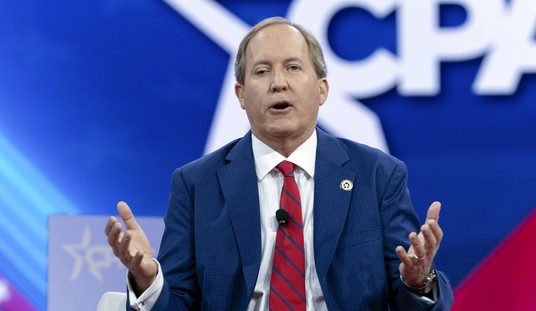Practically ever since the start of the COVID-19 outbreak in the US, the focus has fallen on a lack of effective testing in the US. Without effective tests, policymakers and public-health officials have had to make decisions in the dark without knowing the extent of infection. Shortages of tests began with the CDC’s fumble at the very beginning and a delay in getting the private sector involved, and that fumble turned into a political football that all sides have kicked around ever since.
Do we now have enough tests to conduct more comprehensive population screening for COVID-19? Indeed we do, but now researchers and policymakers face another shortage — patients. With capacity growing every day, the supply has far outstripped the demand, reports the Washington Post:
Four months into the U.S. coronavirus outbreak, tests for the virus finally are becoming widely available, a crucial step toward lifting stay-at-home orders and safely returning to normal life. But while many states no longer report crippling supply shortages, a new problem has emerged: too few people lining up to get tested.
A Washington Post survey of governors’ offices and state health departments found at least a dozen states where testing capacity outstrips the supply of patients. Many have scrambled to make testing more convenient, especially for vulnerable communities, by setting up pop-up sites and developing apps that help assess symptoms, find free test sites and deliver quick results.
But the numbers, while rising, are well short of capacity — and far short of targets set by independent experts. Utah, for example, is conducting about 3,500 tests a day, a little more than a third of its 9,000-test maximum capacity, and health officials have erected highway billboards begging drivers to “GET TESTED FOR COVID-19.”
More than a week ago, the Star Tribune reported the same phenomenon in play in Minnesota. The state had partnered with Mayo Clinic and others to get tests into local production, with a target capacity of 20,000 tests a day. That would give epidemiologists enough data to determine where hot spots may develop and to use targeted restrictions to tamp them down. Unfortunately, the state’s earlier messages discouraging testing worked too well, it appears, even though the state’s testing capacity has grown substantially enough for population monitoring:
Even as the number of confirmed COVID-19 cases in Minnesota continues to soar, the push to dramatically expand testing is coming up short because not enough people with symptoms are seeking tests.
The puzzling twist comes as the state Saturday recorded its fourth consecutive day of more than 700 new confirmed COVID-19 cases. It also reported 24 more deaths. The case count continues its steady climb even as officials admit that testing remains unable to capture the full extent of the virus’ spread. …
“The providers are telling us: People aren’t coming in, either because they had gotten the message previously that testing wasn’t available or for whatever reason,” said Jan Malcolm, the state’s health commissioner. “People aren’t availing themselves of the testing capacity that’s there. We need to do better.”
The Minnesota Department of Health is calling for patients with symptoms to get tested. Testing is key to understanding not only the disease, but also when states can begin to safely reopen businesses and activities that remain shut down by stay-at-home orders.
Even in New York, where the spread of the virus raced through the population before shelter-in-place orders flattened the curve, demand has not kept up with supply. Yesterday, Andrew Cuomo noted that the state is only using about a third of its capacity in some regions, and urged more New Yorkers to get themselves tested:
“There is no reason why you should not get the test,” Cuomo said, calling on anyone with symptoms to get a test as soon as possible.
“I am not good at this, but this test is not an invasive test, there’s no pain to this test there is nothing about this test that should intimidate people from not taking this test. … It is so fast and so easy that even a governor can take this test. That’s how fast and easy it is,” Cuomo said, before a doctor joined the governor at his daily briefing to administer the test to him.
Cuomo indicated a significant percentage of the state’s daily test stockpile go unused. The governor revealed that some testing sites who have the daily capacity to conduct 15,000 tests are only testing 5,000 per day.
At least two states now are pushing even asymptomatic people to start getting tested. Jared Polis offered free coronavirus tests to anyone in Colorado, although the governor did emphasize that anyone with symptoms needs to get tested immediately regardless of the strength of those symptoms. Alabama’s Huntsville Hospital made a similar offer today as well, noting that “we’re not using all the tests we’ve got.” Other states will likely follow suit quickly in order to get the data necessary for calculating reopening policies.
This looks like the same kind of messaging artifact as with mask-wearing, although a less-egregious example. When faced with a shortage of PPE, the CDC and other public-health agencies warned Americans not to buy the masks because they wouldn’t protect them from the virus anyway. After the supply rebounded, the CDC then reversed itself and argued that everyone should wear masks in public to prevent the spread, contradicting its earlier messaging — a so-called “noble lie” that undermined the CDC’s credibility.
The earlier messaging on testing wasn’t dishonest, but it did perhaps oversell counterindications for testing. With only a very limited supply available, it made sense to tell people not to get tested unless they became seriously symptomatic. Most people, even those who develop mild symptoms of infection, will ride out the virus with the same strategy as the flu — bed rest and plenty of liquids. Why waste the then-precious few tests unless more aggressive treatment was indicated? That logic, however, still applies to people who’d rather not walk into clinics right now and risk acquiring COVID-19 in that manner instead.
In fact, most people probably won’t bother getting tested until reliable and widely available antibody tests come along. A negative result on an antigen test means next to nothing to the patients personally; it still leaves one in the same position as before, presumably vulnerable to infection. So what’s the point? An antibody test, on the other hand, could tell a person that they don’t need to worry any more and can get back to a more normal life — which makes such a test worth their time and whatever risk it might entail.
The lesson here? Incentives matter, and disincentivizing messaging sticks. Until states come up with an incentive for asymptomatic antigen testing, they’re likely to continue to see the patient-testing shortages they inadvertently created.







